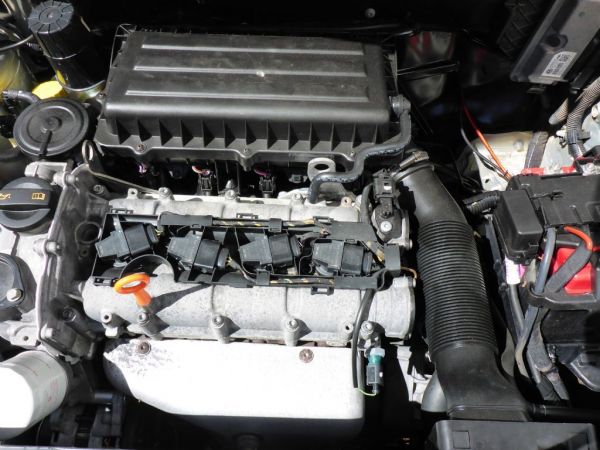Upgrade your machinery with a high-quality clp engine.
Upgrade your machinery with a high-quality clp engine.
Blog Article
How a Clp Engine Can Improve Efficiency in Various Industries
The introduction of CLP engines notes a substantial shift in functional effectiveness throughout numerous sectors, driven by their capacity to optimize fuel intake and decrease downtime. As organizations increasingly focus on sustainability together with effectiveness, the role of CLP engines comes to be also much more vital.
Overview of CLP Engines
CLP engines, or Constant Fluid Propellant engines, represent a significant innovation in propulsion technology, especially for area applications. These engines utilize a continuous feed system that allows for the sustained expulsion of propellant, causing enhanced performance and performance contrasted to standard solid or hybrid propulsion systems. By keeping a constant circulation of fluid propellant, CLP engines can attain extra specific thrust control, which is critical for steering spacecraft in various mission scenarios.
The style of CLP engines integrates sophisticated products and cutting-edge fuel administration systems. clp engine. This leads to lowered weight and boosted dependability, vital elements for long-duration space objectives. The continual procedure decreases the risk of burning instability, an usual obstacle in traditional rocket engines.

Advantages in Manufacturing
The production of Continual Fluid Propellant (CLP) engines presents several noteworthy advantages that boost both effectiveness and cost-effectiveness. Among the primary benefits is the structured production procedure, which reduces the intricacy connected with traditional propulsion systems. By making use of fluid propellant, manufacturers can attain better accuracy in engine performance, resulting in optimized power outcome and reduced waste.
Additionally, CLP engines facilitate a greater level of modularity, permitting less complicated integration into various manufacturing lines. This adaptability can considerably reduce preparations and improve total operational flexibility. The usage of CLP modern technology additionally has a tendency to minimize the need for substantial maintenance because of less relocating parts, which equates into lowered downtime and operational prices.

Applications in Logistics
Leveraging Continual Fluid Propellant (CLP) engines in logistics uses considerable benefits in functional effectiveness and dependability. These engines supply a durable solution for various transport demands, allowing the smooth motion of goods across large ranges. The inherent design of CLP engines enables for constant power outcome, which more tips here translates right into smoother and extra predictable transport schedules.
One of the key applications of CLP engines in logistics remains in heavy-duty freight transportation, where they can drive both ground and aerial lorries. Their capacity to preserve high efficiency under varying lots problems makes sure that delivery timelines are satisfied, thus boosting consumer contentment. In addition, CLP engines can be incorporated right into automated logistics systems, promoting real-time monitoring and maximizing course planning.
In addition, the toughness of CLP engines minimizes upkeep downtime, allowing logistics business to optimize their operational capabilities. This is especially helpful in warehousing procedures, where effectiveness in taking care of and carrying goods is crucial. As logistics remains to evolve, the combination of CLP engines represents a forward-thinking strategy that not only boosts efficiency yet additionally supports the market's expanding demands for reliability and rate.
Influence On Energy Effectiveness
How do Constant Fluid Propellant (CLP) engines boost power efficiency in transport? CLP engines make use of a constant circulation of fluid gas, enhancing burning processes and maintaining a steady drive outcome. This design minimizes power losses connected with standard burning engines, where gas shipment can vary and result in inefficiencies.
The constant operation of CLP engines enables an extra reliable thermal cycle, causing higher certain impulse contrasted to conventional engines. clp engine. This converts to minimized fuel consumption for the very same amount of work done, substantially decreasing operational costs across different transportation industries, including aviation and maritime sectors
In addition, the capacity of CLP engines to preserve optimum performance under varying tons problems minimizes the demand for frequent acceleration and slowdown, further boosting fuel effectiveness. Improved energy efficiency not just adds to have a peek at this website cost savings but additionally causes lower greenhouse gas emissions, aligning with international sustainability goals.
Future Trends and Innovations
Emerging developments in Constant Liquid Propellant (CLP) engine technology promise to revolutionize the landscape of transport efficiency and sustainability. As markets pivot toward greener choices, CLP engines stand at the forefront, incorporating innovative materials and style methods that improve efficiency while minimizing environmental effect.
One of the most promising patterns is the adoption of crossbreed systems that incorporate CLP engines with renewable resource resources. This synergy can optimize gas consumption and reduce discharges, lining up with international sustainability goals. Moreover, innovations in computational liquid dynamics (CFD) are facilitating the style of more aerodynamically reliable engines, leading to lowered drag and enhanced gas performance.
Moreover, the growth of wise monitoring systems is established to improve operational efficiencies. These systems utilize data analytics and IoT technology to enhance engine efficiency discover this info here in real-time, guaranteeing that the engines operate within their most reliable criteria.
As research study remains to explore different propellant formulations-- such as biofuels and synthetic fuels-- the future of CLP engines looks encouraging. By utilizing these innovations, sectors can not only enhance their performance however also add significantly to a cleaner, much more lasting future in transportation.
Verdict
In verdict, CLP engines represent a considerable innovation in effectiveness across numerous markets. The combination of innovative materials and fewer moving components reduces upkeep needs, while alignment with sustainability objectives positions CLP engines as an essential innovation for the future.
Report this page